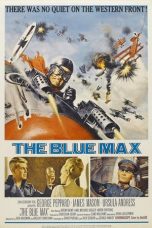- Source: Red to Blue
- Pokémon Red, Blue, dan Yellow
- Pokémon Mystery Dungeon: Blue Rescue Team dan Red Rescue Team
- Red Velvet (grup musik)
- Eevee
- Layar Biru Maut
- Blue Steel (peluru kendali)
- Shin Eun-soo
- Max Verstappen
- Kim Ha-neul
- Siluk merah
- Red states and blue states
- Pokémon Red, Blue, and Yellow
- Red pill and blue pill
- Red vs. Blue
- RGB color model
- Red Blue
- Red to Blue
- Red Hot + Blue
- Courtesy of the Red, White and Blue (The Angry American)
- Red and Blue Chair
X-Men (2000)
No More Posts Available.
No more pages to load.
Red to Blue is an album by the American musician Leon Redbone, released in 1986. It was his first album for August Records, a label started by Redbone. Redbone supported the album with a North American tour.
Production
The album was produced by Beryl Handler and Redbone. David Bromberg accompanied Redbone on the cover of the Bob Dylan song "Living the Blues". Hank Williams Jr. provided a spoken part for the cover of his father's version of "Lovesick Blues". Biréli Lagrène played guitar on "Whose Honey Are You?" The Roches contributed backing vocals; Dr. John played piano. The album title comes from a Jelly Roll Morton quote that describes the transition from Spanish musical styles to blues-based ones.
Critical reception
The New York Times wrote that "Leon Redbone carries to a peak his mixture of jazz-filtered old pop songs, blues and 'contemp-folk' with the assistance of a pool of traditional jazz and folk-jazz musicians who light momentarily like hummingbirds in these performances, then take off again." The Columbia Daily Tribune said that the album "saunters and shuffles like an old hepcat, past his prime but still jiving along at his own unhurried pace."
The Vancouver Sun determined that "Redbone's almost hallucinogenic, sweeping you up in the gentle swing of his music and transporting you back to a '30s dance hall." The Atlanta Journal-Constitution deemed the album "his standard fare—barely intelligible vocals that get so loooow, clarinets, coronets, guitars, banjoes and tuba." Likewise, the Detroit Free Press considered it "the same old hambone."
AllMusic praised "the usual Dixieland backing augmenting his tasteful fingerpicked guitar work."




